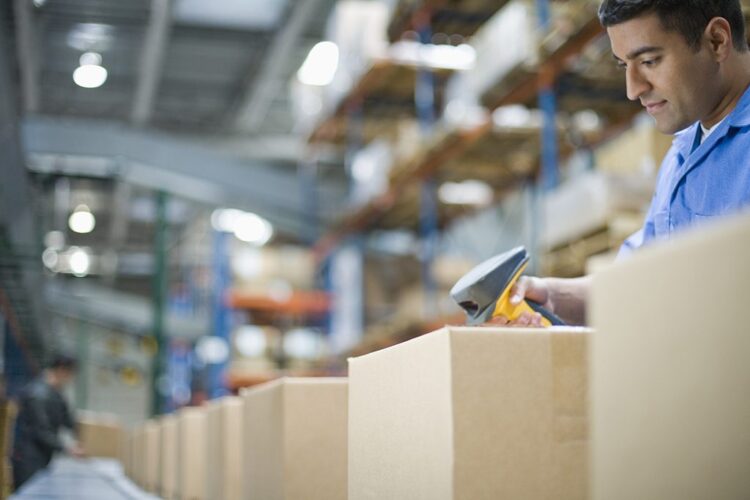Apart from being a harrowing public health crisis of global proportions, COVID-19 has also upended commerce. As stores shutter en masse, shoppers further strain supply chains with stock-outs. Governments are also stress testing the economy with preventative social distancing measures which leaves retailers, manufacturers and brands struggling to keep pace. Fortunately, not all is doom and gloom. Many companies are well-positioned operationally and financially to not only survive this hardship but come out stronger on the other side.
For those looking for added perspective in uncertain times, we’ve compiled some interesting facts and figures—a mix of proprietary Kibo data and industry stats—we hope will serve as a guide. Under Heavy Impact, you’ll find data on the extent of business pain that contextualizes the situation. Moderate Impact stats are of a more tolerable variety. And Positive Developments—offering the bulk of the insights—provides a roadmap of good (and actionable) news.
With that in mind, it should be stressed that the outbreak has evolved quickly up to now, and we recognize that some of the perspectives here may also quickly grow outdated. This article reflects our perspective as of March 23, 2020, and will be updated regularly.
Heavy Impact
-1 – That’s the score financial firm UBS assigned to some fast-fashion European retailers, indicating that certain fast-fashion retail players are especially vulnerable to the economic effects of COVID-19, partly in due to their high inventory turnover.
-4% – In the last four weeks, the distribution market in the UK has experienced a four percent contraction due to the ill effects of COVID-19.
Feb 24 – Kibo data reveals that online shopping cart abandonment rates for UK grocery players are on the rise since Feb 24 due to a range of factors, including (1) an increase in sold-out items, (2) delivery time slots being filled to the max, and (3) stores not accepting new customers.
34% – CFOs have expressed growing concern of COVID-19’s accelerating economic impact, with 34 percent of CFOs listing supply chain issues as a top-three concern with respect to COVID-19.
Moderate Impact
62% – Cost containment is top of mind for many companies right now, with 62% of CFOs naming it the top financial action they’re considering in response to the COVID-19 crisis. Now, more than ever, is the time for retailers and brands to consider cost-effective commerce solutions that will future-proof their businesses.
41% – One should note that 41 percent of retailers in the food, fashion, and health and beauty categories in the UK anticipate the crisis only slightly—the key word here—impacting their sales even if the crisis were to persist long-term.
B2B Office Supplies – In the B2B office supplies space, a category that has seen positive returns as offices outfit their workers with home offices and supplies, we’re hearing challenges with last-mile fulfillment. Precisely because office supplies retailers and providers are having to deliver to office workers’ homes, and not offices as offices are closed, they’ve expressed rising challenges on this front.
Positive Developments
22% – Internal Kibo monitoring shows that stores operating across the Electronics, Home Goods, and Department Stores categories have seen a 22 percent spike in purchases when compared to this time last year.
30% – Almost a third of companies say they’ll use this moment to begin to look at their supply chains in more depth. As companies reconfigure their supply chains, they should consider the benefits of global inventory fulfillment and intelligent order routing.
60-day returns – Though they’ve had to temporarily close their stores, British retailer Debenhams is still fielding online orders, and has extended its returns policy to 60 days to help offset increased challenges customers are facing to return purchased items.
30% – Last week (3/16), we saw the largest WoW increase in experience activation for 2020 with a ~30% increase in Kibo Experiences created vs. the prior week (see below).

In that week, ~15% of all experiences created either had “Corona” or “COVID” in the name of the experience which contributed to that increase.

We saw the largest rise in Agility and Segmentation Experiences activated last week, up 37 percent (see March 16 bar).

Meanwhile, “COVID” or “Corona” appeared in ~16 percent of those Agility and Segmentation Experiences.

$1 billion – That’s the sum Costco paid in cash to purchase its distribution and fulfillment supplier, Innovel Solutions, from Transform Holdco, LLC, just a week ago, indicating that the grocery giant is committed to improving its ecommerce operations even mid-crisis.
$3.9 trillion – Despite COVID-19’s devastating effects, NRF still projects that retail sales will rise in 2020 by at least 35 percent, to the tune of $3.9 trillion.
25% and 42% – Many industries are experiencing an uptick in online traffic, including the supermarket industry, and retail healthcare, as Contentsquare’s monitoring of online consumer behavior reveals.
7% – Mobile shoppers, especially those in the high-income bracket, logged an increase of 7.7 percent this month, according to a PYMNTS survey.
109% – Grocery online sessions have increased significantly in the last week, internal Kibo data shows us. With many countries’ denizens shuttered in for the foreseeable future, online grocery sales and sessions are expected to continue to rise. Still, as aforementioned data shows, grocery chains will have to address delivery and inventory woes in order to meet rising demand.




